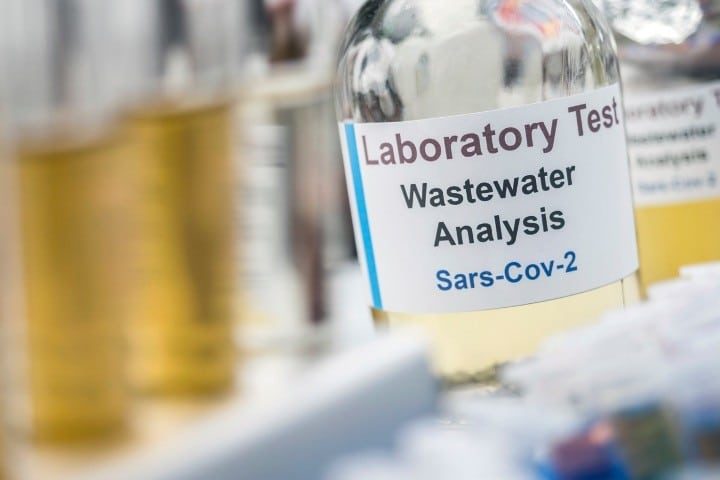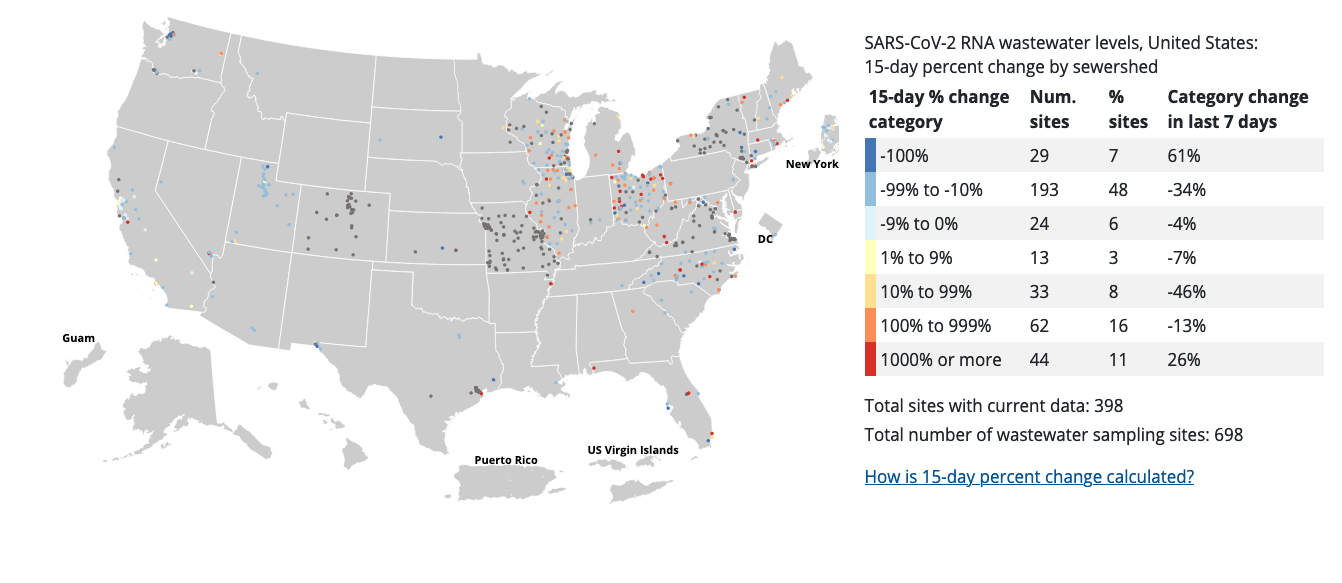
The U.S. Centers for Disease Control and Prevention (CDC) has confirmed that Covid may be on the rise in some areas of the country, since elevated rates of viral particles have been detected in wastewater samples.
According to the CDC tracker, during the period between February 26, 2022 and March 12, 2022, of the 398 current wastewater sampling sites with active data, 62 sites detected a 100-percent to 999-percent increase in SARS-CoV-2 RNA wastewater levels. Forty-four sites experienced a 1,000-percent increase.
However, some areas saw a decrease in viral RNA detected in wastewater. Twenty-nine sites reported a 100-percent drop, and 48 saw a 10-percent to 99-percent decrease. Some of these sites neighbor those that saw a dramatic uptick; so far, the CDC has not provided any explanation for this.

Bloomberg reported that the number of Covid traces found at sampling sites from March 1 to March 10 doubled when compared to the period running from February 1 to February 10. The outlet noted, however, that during that period, fewer sites were available for testing.
The CDC established the National Wastewater Surveillance System (NWSS) in September 2020, and last month announced NWSS data was publicly available through its COVID-19 data tracker on the agency’s website.
How does the monitoring program work? The agency notes,
People infected with SARS-CoV-2 can shed the virus in their feces, even if they don’t have symptoms. The virus can then be detected in wastewater, enabling wastewater surveillance to capture presence of SARS-CoV-2 shed by people with and without symptoms. This allows wastewater surveillance to serve as an early warning that COVID-19 is spreading in a community.
Knowing about the dubious accuracy of the Covid tests used on people, one may only hope that the CDC is using more reliable testing procedures for the wastewater.
The head of the program, Amy Kirby, confirmed the recent findings in a statement cited by NBC News: “While wastewater levels are generally very low across the board, we are seeing an uptick of sites reporting an increase.” She said the “bumps” are not necessarily troubling since they “may simply reflect [a] minor increase from very low levels to still low levels.”
Kirby added, however, that “Some communities may be starting to see an increase in Covid-19 infections, as prevention strategies in many states have changed in recent weeks.”
“So it remains unclear if this is an ominous sign of things to come,” noted NBC.
The outlet also quoted Dr. Sadiya Khan, an epidemiologist at the Northwestern University Feinberg School of Medicine, who sees the latest trend as a matter of “grave concern.” Dr. Khan connected the “not surprising” uptick to the loosening of Covid-related restrictions such as mask mandates in schools and in communities in general. Furthermore, she said, the United States is following the path of the European Covid trend. “If you look at patterns in Europe, there has been an increase in the last few days as well. If we’ve learned anything in this pandemic, it is that the trends in Europe precede our own.”
The epidemiologist suggested people “focus on the things that work” — in her opinion — such as getting vaccinated, getting a booster, and continuing to wear a mask. Khan did not mention the discouraging number of breakthrough infections and hospitalizations of fully vaccinated and boosted individuals, or the fact that mask-wearing made no difference in community transmission (per the CDC), and in some cases was linked to higher Covid rates.
Some observers are speaking about the spread of yet another strain of Covid that is “even more contagious.”
“We definitely are seeing an increase across our region, across our country, and indeed across the world, of the BA.2 omicron variant,” Dr. Aaron Glatt, who serves as the chief of infectious diseases and is an epidemiologist at Mount Sinai South Nassau on Long Island, New York, told Fox News.
According to New York State Health Department data, BA.2 is doubling in proportion statewide every two weeks. It represented about 40 percent of all Covid cases in the state as of March 12.
One may be forgiven for losing track of all the Covid variants. Just for reference, BA.2 is a subvariant of omicron that is believed to be more infectious than its “older brother.” At this time, it’s not believed that the BA.2 variant causes more severe illness or poses an increased risk of being hospitalized, even though “further research is needed,” per the World Health Organization.
It is important to note that, currently, 81.6 percent of Americans aged five and older have received at least one dose of the Covid vaccine, 69.4 percent are “fully vaccinated,” and 44.4 percent have gotten a booster, according to the CDC.
The CDC also notes that almost 79.5 million Americans have contracted Covid, and of those, nearly a million died. This equates to 78.5 million people, or more than 23% of the total population. People with natural immunity and the vaccinated account for 92 percent of the population; if vaccines sterilized and prevented infections, Covid would be a thing of the past, and taxpayer dollars would not be squandered on testing wastewater for viral RNA.





